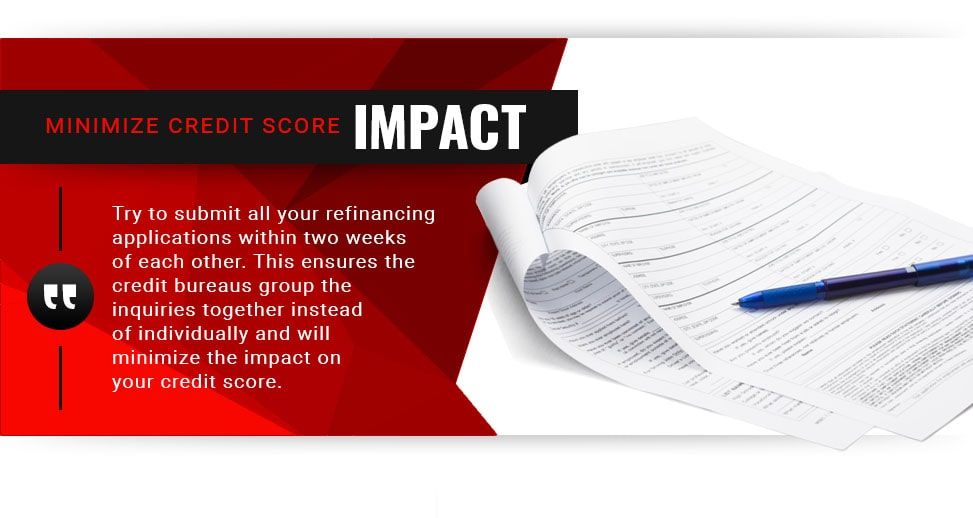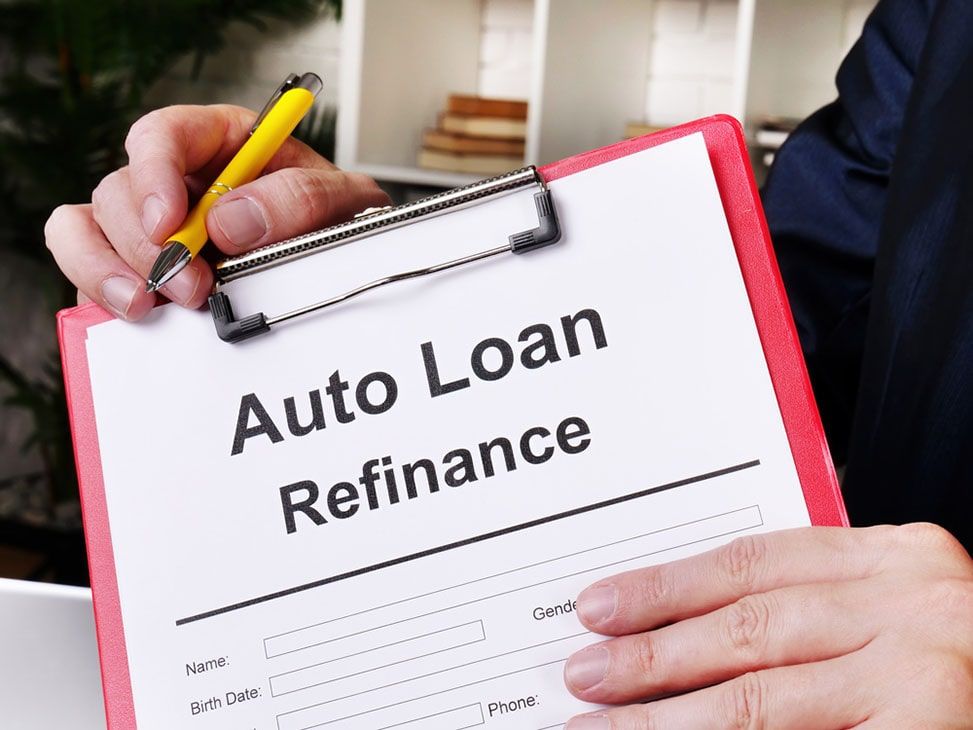
Tips on How to Refinance a Car Loan
Refinancing your car loan may sound like a chore. However, it can lower your monthly payments and your interest rate, saving you money. If your credit score has improved recently, interest rates have gone down, or you simply want to pay off your loan sooner, refinancing your car loan can prove beneficial. The refinancing process is easier than you think. The application process for how to refinance a car loan usually takes less than an hour, and most lenders will give you a decision within minutes.
Check Your Credit Score
Your credit score has the biggest impact on the interest rate for your refinanced auto loan. If you’ve been making your monthly loan payments as scheduled, your credit score might be higher than when you first applied for your loan. A higher credit score can mean a lower interest rate when refinancing. The lender on your car loan reports your payment history to the major credit bureaus. Each month you pay on time is reflected in this record and can boost your score. In addition, your credit score improves further as the amount owed on your car loan decreases.
Each year you can get a free credit score report from each of the three credit reporting bureaus: Experian, Equifax, and Transunion. This report will indicate your FICO credit score and all the factors that went into calculating it. You might not have to run a credit report to see your credit score. Many credit card companies and banks offer free monthly credit reports to customers. If your credit score hasn’t changed much, it can still be worthwhile to refinance your auto loan. Refinancing can improve your interest rates if current rates have dropped significantly from when you first got your loan. Extending the length of your loan when refinancing may lower your monthly payment, providing more flexibility in your finances.
Collect Important Documents
You’ll need a few basic documents to apply for refinancing on your car loan. Gathering everything you might need before you apply will save you time and frustration during the application process. Starting with the basics, you’ll need to show proof of income. This can be the last few months of paychecks from your employer or the previous years’ tax returns. If you recently changed jobs, you might need to show a contract from your current employer to help prove your income if you don’t have enough prior paychecks.

The lender will also want information about your finances, including any other regular loan payments you have like a mortgage or student debt. Of course, you’ll need to prove your identity as well, so ensure you have your social security number and driver’s license handy. Your car is used as collateral for your loan, so you’ll need to provide basic information about the vehicle itself. For example, you’ll want to know the car’s Vehicle Identification Number (VIN), year, make, model, and mileage. In addition, you’ll need to show proof of car insurance and the original loan documents, including the remaining balance and current interest rate.
Most cars don’t need a formal appraisal before you can refinance. Kelley Blue Book and the National Automobile Dealers Association provide value estimations for cars that lenders frequently use when refinancing car loans. This doesn’t mean that the car shouldn’t be in good condition. A car that is protected with a custom car cover and accident-free will be much easier to refinance.
Shop Our Entire Selection of Car Covers
Check Your Loan Terms
There are a couple of cases where refinancing your car loan doesn’t make sense. First, some auto loans come with prepayment penalties or fees attached. This means you’ll have to pay extra if you pay off the loan before the due date. Check your loan terms to see if there’s a penalty for early payment and, if so, how much. If the fee is ridiculously high, you won’t save anything by refinancing your car loan.
Another case where it might not be possible to refinance is if your current loan is underwater. Your car is used as the collateral on your car loan. This means that if you fail to make your monthly payments, the lender can take ownership of your car and sell it to regain the money you owed on the loan. Unfortunately, cars depreciate over time. If your car is worth less than the remaining amount on the loan, then it’s considered underwater. Most lenders don’t want to refinance a loan that’s underwater because they won’t be able to make their money back if you default on the loan. Lenders calculate a loan-to-value ratio to decide whether your car is worth enough to be considered collateral on a refinanced loan.
The loan-to-value ratio is calculated by taking the current loan amount divided by the car’s value. Then multiply the number by 100 to get a percentage. You want a loan-to-value ratio under 125% for most lenders. You can find your car’s value by searching Kelley Blue Book or the National Automobile Dealer’s Association guide. If your loan-to-value ratio is above 125%, you can make extra payments to get a car loan back on track. However, it’s best to never let your car loan get underwater in the first place. Stay up to date on car maintenance to keep your car from losing value too quickly.

Get Some Quotes
Before heading straight into refinancing applications, get some quotes to see what your potential savings look like. Many banks and credit unions have refinancing calculators or quote tools that give you the numbers without running a credit check. This can help you visualize your potential interest rate and monthly payment.
You can play around a little bit with the quotes to see how different terms affect your overall savings. Maybe you want to see how extending the length of the loan lowers your payment. With less money going to your car loan every month, you can save up for another important financial goal. You’ll also see how different interest rates affect your monthly payments and the total spent over the life of the loan. Without a hard credit check, you aren’t guaranteed any interest rate that you see in a quote, but knowing how the rate affects your refinancing savings can help you choose a lender once you apply.
Decide to Refinance
Armed with all your important documents and a couple of refinancing quotes, you should be able to decide if refinancing is the right choice for you. Refinancing isn’t without risks. There are types of refinancing loans like cash-out refinancing that can increase the risk you’ll owe more on your car than it’s worth. If something happens to your income, you may be unable to afford the new monthly payments and could end up defaulting on the loan and losing your car.
Depending on how old your car is and how long ago you got your original loan, refinancing may not save you a lot of money. But just because the numbers don’t work out now, it doesn’t mean you can’t decide to refinance in the future. The longer you pay your monthly loan bill on time, the higher your credit score will be and the more likely it will be you can get a lower interest rate in the future.
Keep in mind that not all lenders will refinance every car loan. If the car is too old or has too many miles on it, some banks won’t offer a refinanced auto loan. This varies between different banks or states. In general, if a car is over seven years old or has more than 100,000 miles, you should check to see if your car meets the lender’s requirements for refinancing.

Apply to Several Lenders
Always apply to more than one company when refinancing a car loan. The application is free and more options mean a better opportunity to secure the best rate. You can read the reviews of lenders and compare the refinancing calculator quotes to decide which lenders to apply to first. A list of three to five lenders is sufficient when refinancing an auto loan.
Shopping for your loan may drop your credit score by a few points if the loan institution does a hard pull when checking your credit report. A soft pull will have no impact on your credit score and may occur if you prequalify for the loan. Try to submit all your refinancing applications within two weeks of each other. This ensures the credit bureaus group the inquiries together instead of individually and will minimize the impact on your credit score.
If you get declined after applying for refinancing, stay calm. Each lender has different criteria for taking on a car loan. It may not have to do with your credit score or financial information. You may have been denied for a different reason. One denial does not mean that all lenders will deny your refinancing application.
Compare Offers
You already have practice comparing offers if you’ve run quotes before applying for refinancing. Once you get your quotes in hand, read through the entire list of terms. Then, compare the details of the loans beyond just the monthly payment and interest rates. Read the agreement to find any hidden fees or prepayment penalties. Next, confirm any initial calculations you did to double-check that the math is correct and your new loan will result in savings for you. Finally, ask your potential lender any questions you have about the loan terms or the process of refinancing.

See if you qualify for any discounts that might improve the terms of the offer. For example, many banks offer loyalty incentives that can lower your interest rate if you have additional accounts with them. Some employers may have special deals with certain lenders to offer their employees a discount on a refinanced car loan. Look into all your options to get the best deal for your new loan. Once you’ve thoroughly compared the refinancing offers and picked a winner, you’ll accept the offer, sign the new paperwork, and be just a few steps away from having a newly refinanced car loan.
Protect Your Vehicle with a Quality Cover
Check Your Old Loan
Most lenders will handle the repayment of your original auto loan as part of the refinancing process. However, you can reach out to your new lender and confirm this when accepting the terms of your new loan. A few weeks after all the paperwork has been completed, you can check on your original loan to see that it has been paid off. If it’s around the end of the month, there should be a statement showing a zero balance on the loan. Some credit monitoring programs will also track your loan accounts and show that your original car loan has a zero balance.
If, for some reason, your old loan doesn’t show a zero balance, reach out to your refinancing lender to see what’s going on. You don’t want to be responsible for a missed payment on your original loan that harms your credit score.

Set Up Automatic Payments
Take paying your refinanced car loan off your to-do list every month by setting up an automatic payment. If you had this set up with your previous loan, it’s easy to forget the first payment on your new loan and only set it up after you’ve been hit with a late fee. Some lenders will even reward you for setting up automatic payments. You may be able to get a lower interest rate or pay your loan on a later day in the month. This can increase your savings or give you more flexibility in your monthly budget. Your refinanced car loan will likely have a different payment due date than the original loan. Note this new date when you set up automatic payments. This can help ensure you always have enough in your account to avoid an overdraft fee.
Final Tips
You’ll probably only refinance your car loan once, but you get to enjoy your car every day. So put as much care and consideration into maintaining your vehicle as you do when considering your refinancing options. Car covers aren’t just for cars headed into long-term storage. A quality semi-custom or custom car cover can protect your car from theft, storm damage, and bird droppings. It’ll help you enjoy your car long after you’ve paid off your refinanced car loan.
Updated